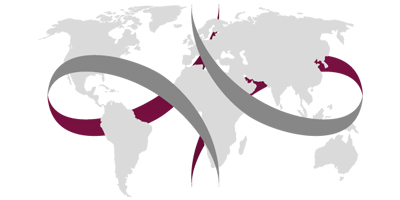
EPHect reaches 30 centres in 19 countries and collects significant amounts of data
WERF EPHect has welcomed its 30th collaborative centre!
The exceptional uptake of the harmonised EPHect tools is evidence of a global dedication to new diagnostic and treatment discoveries for girls and women with endometriosis. A new dawn is breaking in endometriosis discovery as researchers come together to share data.
In endometriosis we know that one size has never fit all. In fact, discovery requires data from many patients and participants, who generously share their unique experiences. It requires diverse scientists and healthcare providers to collaborate and use these harmonised data to improve diagnosis and personalised treatment. No one experience or perspective is enough to tackle endometriosis – but together we can and we will.
Thirty centres in 19 countries are now using the EPHect tools, ensuring that studies can be compared to one another.
Because of this we will soon accurately understand the true spectrum among girls and women with endometriosis.

How easy is it to use the EPHect tools?
The EPHect tools have proven to be easy to use and implement; likely due to the large, multidisciplinary, international expert effort that worked together to develop them. The tools are available in 12 languages!
As of October 2019 all but one site is collecting data with the EPHect clinical questionnaire among the thirty sites utilising EPHect tools, who have formally stated that they are doing so. Among the clinical centres, all but three are using the surgical form. Fourteen sites are collecting blood, five saliva, and six urine. Thirteen are collecting ectopic lesions and eleven eutopic lesions.
Data success
15,930 clinical questionnaires have been completed as have 3,528 surgical forms. Combined with the collection of biospecimens, this is the largest, consistent, data set in endometriosis ever collected.
Ensuring harmonisation of data and sample collection facilitates ease of combination among sites.

Perhaps more importantly, it ensures that results published by different groups are comparable and the focus of heterogeneity can be upon further exploration of true underlying biologic or sociologic differences rather than data or laboratory variability.
